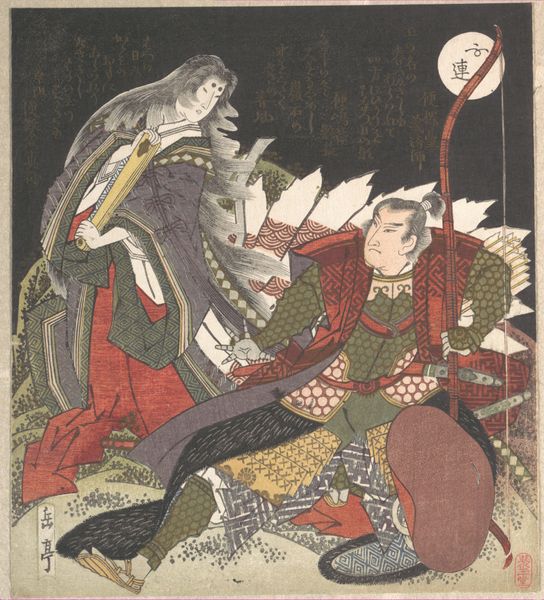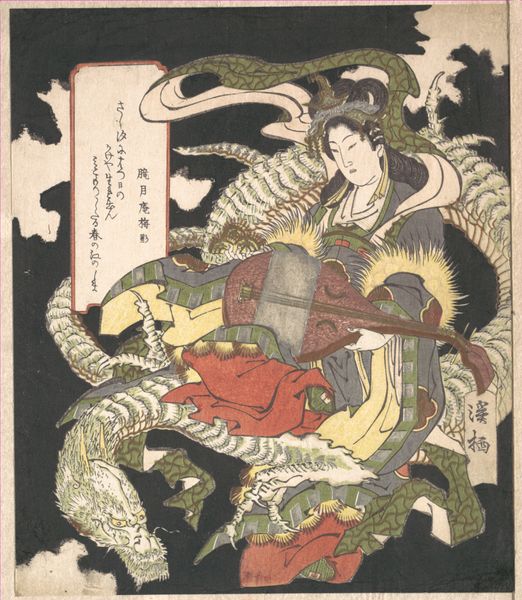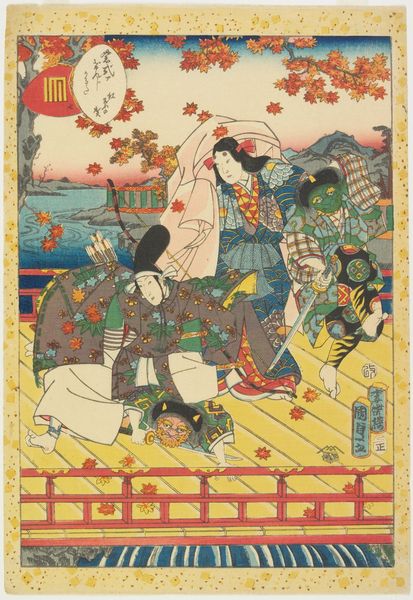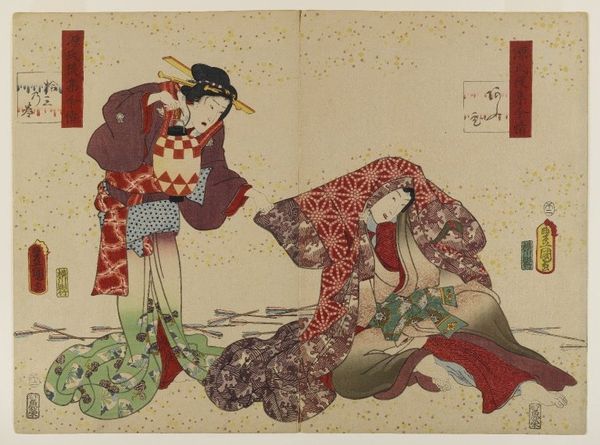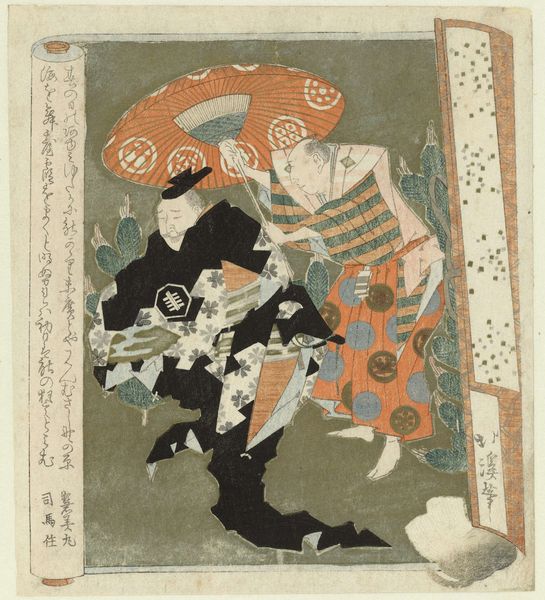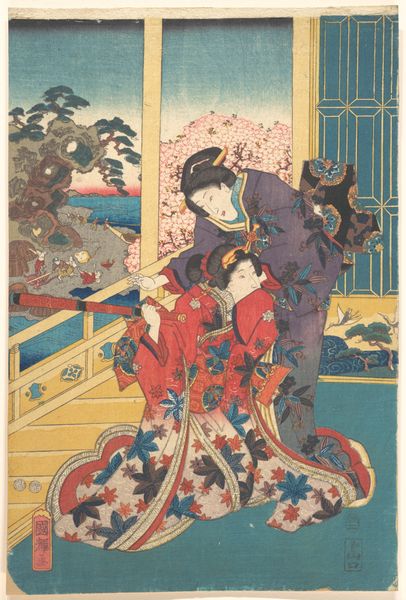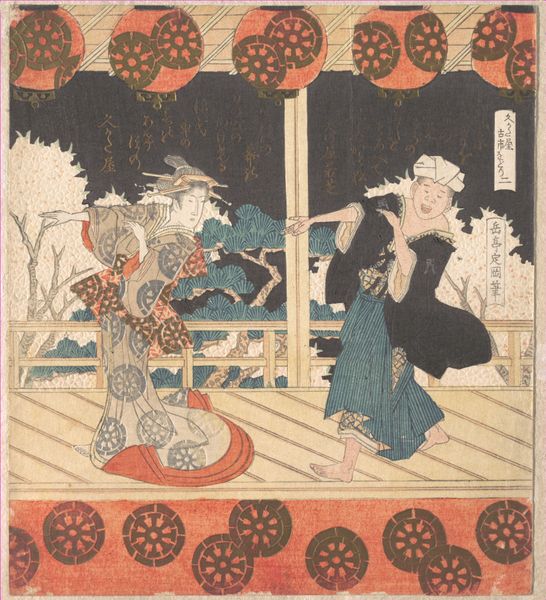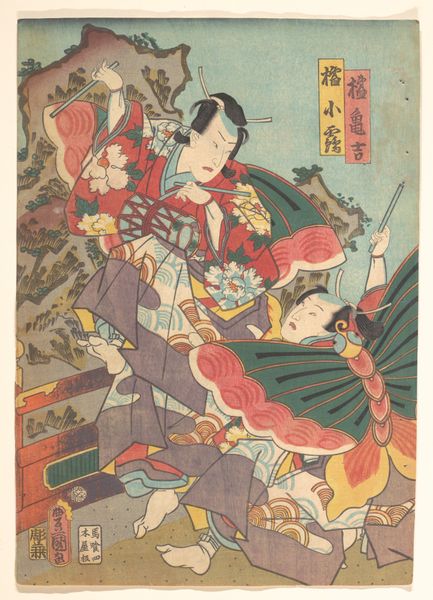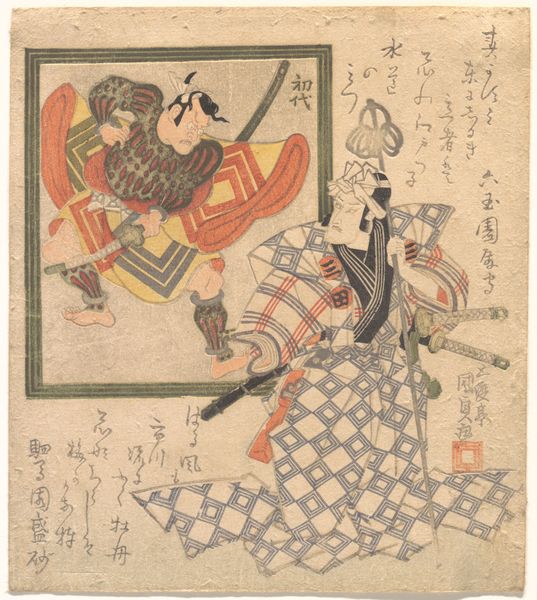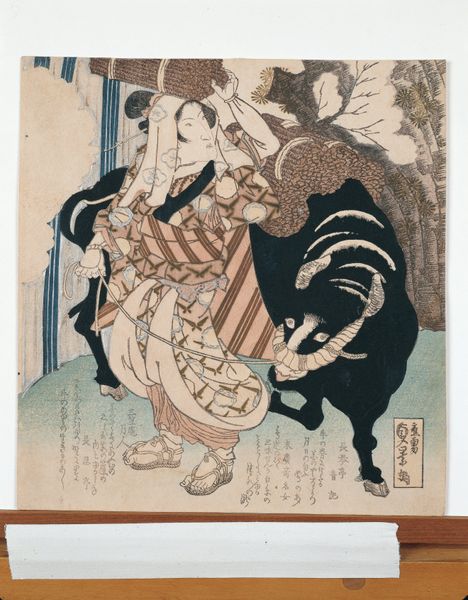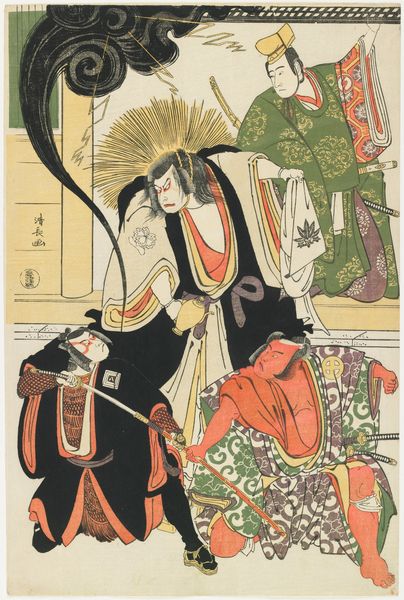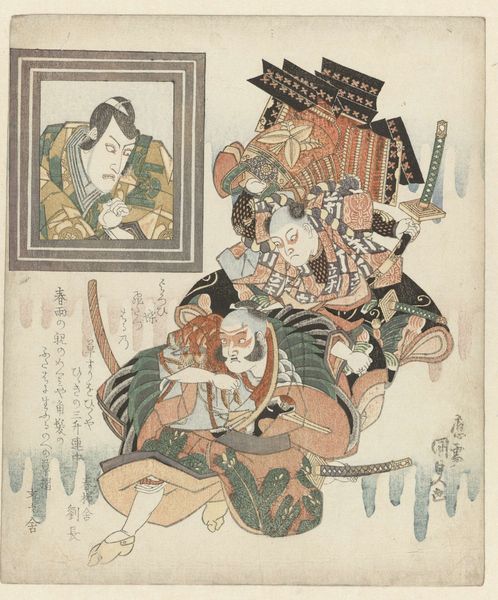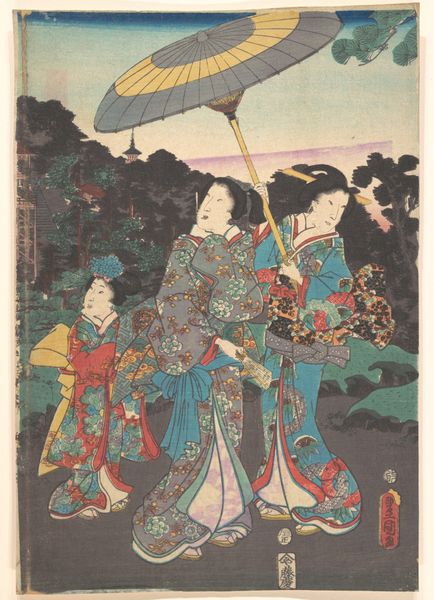
Dimensions: height 353 mm, width 236 mm
Copyright: Rijks Museum: Open Domain
Editor: This print by Kawanabe Kyōsai, made in 1886, is titled *Okuda Sademon Yukitaka.* It's full of such chaotic energy and the two figures are locked in this incredible struggle. What stands out to you in this piece? Curator: I’m drawn to the ways Kyōsai uses caricature here. It’s not just about humor, it’s about critiquing power. Who is being lampooned, and what does that tell us about social hierarchies at the time? Editor: It looks like one figure is striking down at another on the ground. The expressions are so exaggerated. Is the artist making some commentary on samurai culture, or political conflict? Curator: Exactly. This print exists within a long history of art being used to comment on political and social issues. Think about the role of the artist in Meiji-era Japan. Is Kyōsai siding with the establishment or using this imagery to subvert it? Consider, too, the figure on the ground, draped in what looks like a patterned robe covered in human faces – a common Buddhist motif – what's your interpretation? Editor: It’s almost as if the robes of the person being attacked suggests they're being burdened by other people’s sufferings and yet at the same time is being subjugated by this attack, even as they struggle. Curator: And that’s precisely where the power of art lies – in sparking that critical engagement. Kyōsai challenges us to unpack these tensions and contradictions, inviting us to engage in the history of oppression. Editor: This helps me see how much a single image can tell us, not only about artistic skill, but about complex social issues. It's a fantastic demonstration about how cultural critique operates. Curator: I agree. And how important it is for us to consider the perspectives and backgrounds that shape our understanding.
Comments
No comments
Be the first to comment and join the conversation on the ultimate creative platform.
